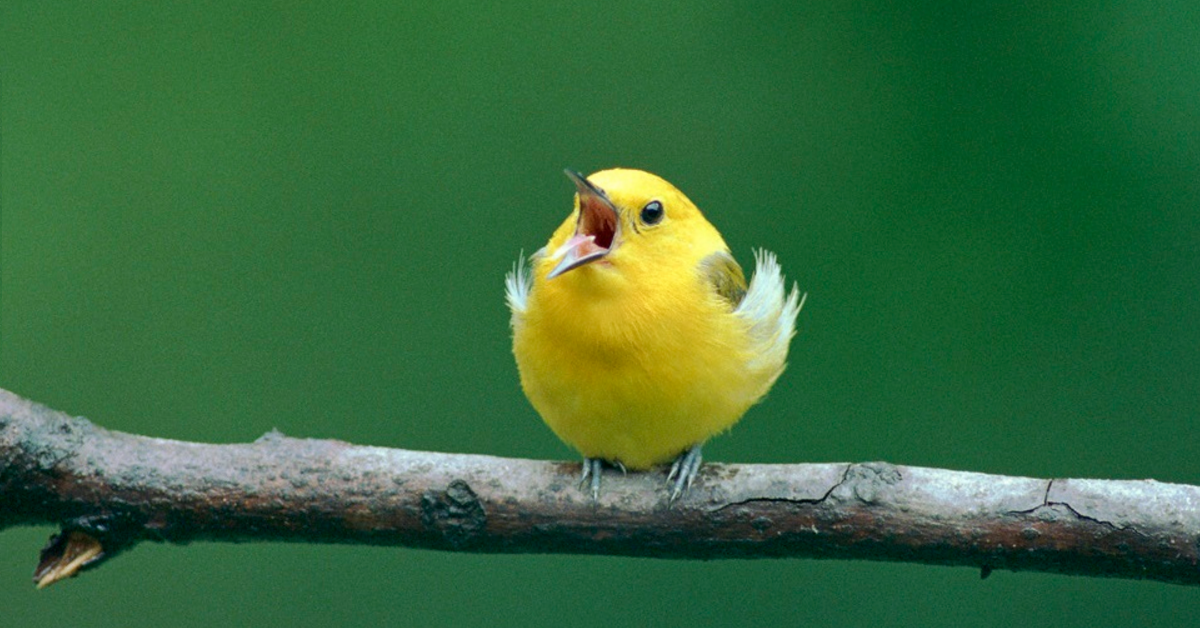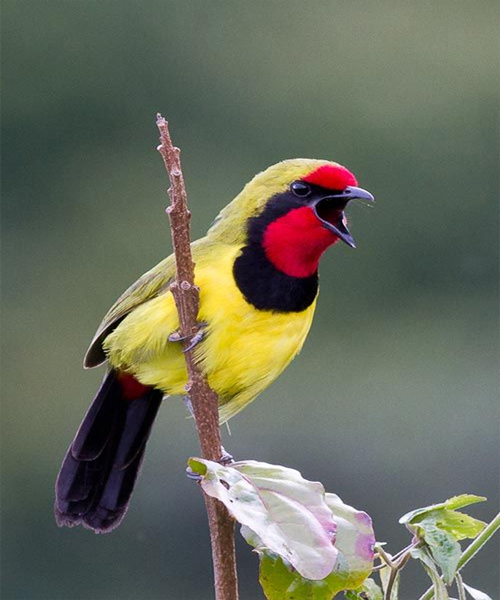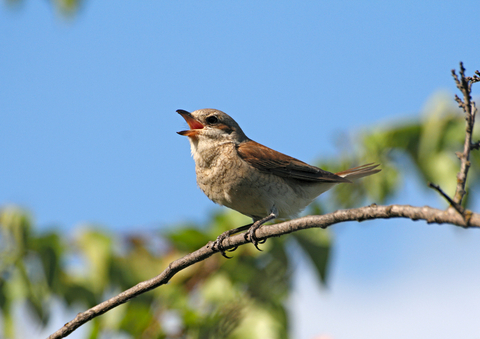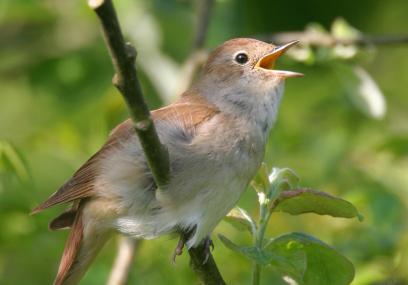Are bird songs “music”?
Do birds sing? Sure, we use the verb but is what’s coming out of those adorable little beaks really music? Does the sound a bird makes contain the necessary elements that make a song? Are birds aware of the musical properties of their voices or are they simply abiding Mother Nature’s laws? Do they just do it for the kicks or is there a pure communicational function to their so called “singing”? So many questions! Don’t worry, I’ve got you covered.
Just to make it clear, there WILL be some awesome bird singing videos in this article but let’s get familiar with the basics first.
As you’ve already gathered yourself, the matter is quite complicated. First of all, what’s the correct term – are bird sounds songs or calls? Both, says science. The difference between the two is in their length, complexity and most importantly – context. Both have specific functions and while all scientists agree on that, some will tell you birds sometimes sing just for the sake of it. We’re not really ornithologists but we know a thing or two about bird songs. Songs are generally longer than calls and are definitely more complex. They’re usually associated with mating and courtship. Calls, on the other hand, serve functions such as keeping flock members in contact or alarming. Other researchers make the distinction based on function, which puts rather short vocalizations (like those of pigeons) and even sounds that are not entirely, or at all, vocal in the song category – woodpeckers drumming or sounds some birds make with their wings in display flight. This seems a bit (or a lot) non-intuitive as it’s usually required for a sound to have a combination of temporal regularity, syllabic diversity and follow certain repetitive and transformative patterns to be considered a song. What bird specialists generally agree upon is that bird songs and bird calls both exist and there are things that define them as such.
As we already mentioned, not all birds have what we humans would call an actual voice. Some are nearly voiceless but they produce sounds which have more percussive qualities. Storks are a good illustration of this with their rhythmic bill clatter but there are numerous other examples of species who have evolved various mechanisms to produce sound mechanically.
Whatever it is they do, how do they do it? In terms of vocal anatomy, birds are both quite similar and quite different from us. As you know, we mammals have something called a larynx at the top of our trachea. Birds don’t. The avian equivalent of our vocal organ is a bony structure called a syrinx. It resonates, sometimes together with a surrounding air sac, to sound waves produced by membranes which birds force air past. The pitch is controlled by adjusting the tension on these membranes or by changing the force of the exhalation which also controls volume. Some birds have the amazing capability to produce two notes at the same time which is achieved thanks to their ability to control the two sides of their trachea independently.
We’re beginning to use some scientific terms but don’t let that scare you – we assure you it’s more simple than it might sound. Another one of those terrifying terms is antiphonal duetting. To gain a general understanding of what that is, basically, remove the first word.
What you get is the habit many birds have to engage in duets, with the important addition that at times their timing is so perfect, you appear to be listening to just one call. It’s a feat of incredible synchronization we humans can only dream about.
An interesting, logical and pretty darn cute fact is that birds teach their children to sing by singing to them. In the post-breeding season, many birds practice their singing skills in the presence of their offspring to influence their vocal development. A bizarre civilizational consequence of this is that the Internet is full of videos and audio files of birds singing their lungs out which decorative bird owners play to their pets so they can learn to sing better without having a parent around to fulfill that role. The song learning process consists of two stages: sensory and sensorimotor learning. Sensory learning means that the juvenile is listening to the father or another bird from the same species and memorizing the song template, consisting of the temporal and spectral characteristics of the song. The sensorimotor learning stage involves the young bird practicing its singing until it can match the memorized template accurately. Scientific, yet adorable.
Some birds, like the ridiculous lyrebird (it’s called a lyrebird, I added the “ridiculous” part, you’ll see why), which we’ll show you in a bit, are insanely good mimics. Many birds can mimic vocally others of the same kind, other species and even man-made sounds. And we’re not just talking about speech, as you’ll see in the lyrebird video we’re building so much suspense around in this paragraph – patience is a virtue. Vocal mimicry can have different functions according to different hypotheses – from forming mixed-species flocks and helping sexual selection (by being an indicator of fitness), to brooding parasites and deterring predators. Some birds, for example, can produce hissing sounds, much like those made by a snake, which helps scare off animals who are a potential threat.
A less-known fact is that there are some species of birds who make use of echolocation – a feature we usually attribute to bats, whales and other mammals. It’s not surprising that these birds usually live in dark caves. The western capercaillie even has been known to use infrasound (at about 20 Hz). Yep, birds are amazing.
Okay, things got a little out of hand on the academic side so it might be best to proceed to the singing bird videos. Lastly, we’re just going to mention that bird songs vary not only from species to species but also among individuals from the same species. They are all very distinct in their diversity in terms of complexity and the number of different songs a species can sing. The brown thrasher has around 3000 (yes, three thousand) songs in its repertoire. In the case of mimicking birds, such as the lyrebird, the combinations of sounds are practically infinite, as they depend on personal experience, meaning that the birds learn to produce and mix sounds they’ve heard throughout their lifetime. Sometimes the term “mimicry” is substituted with the more accurate “appropriation” because the bird is not imitating another species.
Just so I don’t leave you disappointed: there is no firm proof that bird songs have solely a functional side. Some birds might sing just for the fun of it. The truth is we’re not sure. And for a hopeless romantic such as myself, that’s a good thing.
Anyway, if you read the whole article, your brain deserves this next part 🙂
The soothing song of the Silvereye
The calming sounds of the Veery
The reassuring chant of the American Robin
The relieving anthem of the Northern Mockingbird
The mollifying melody of the Song Thrush
The alleviating aria of the Rose-breasted Grosbeak
The easing vocals of the male Asian Koel
…and those of the female
The taming cheep of the Orange Winged Amazon
The consoling chirp of the House Sparrow
The pacifying hymn of the Whistling Cockatiel
The relaxing chatter of the Rose Breasted Grosbeak
The warming whistle of the Canary
A singing lesson from of the Common Nightingale
And finally, the CRAZY Lyrebird you’ve heard so much about!!!
Hope you enjoyed this one and, as always, for more birds, I mean music, head over to Drooble! Chirp-Chirp 🙂







